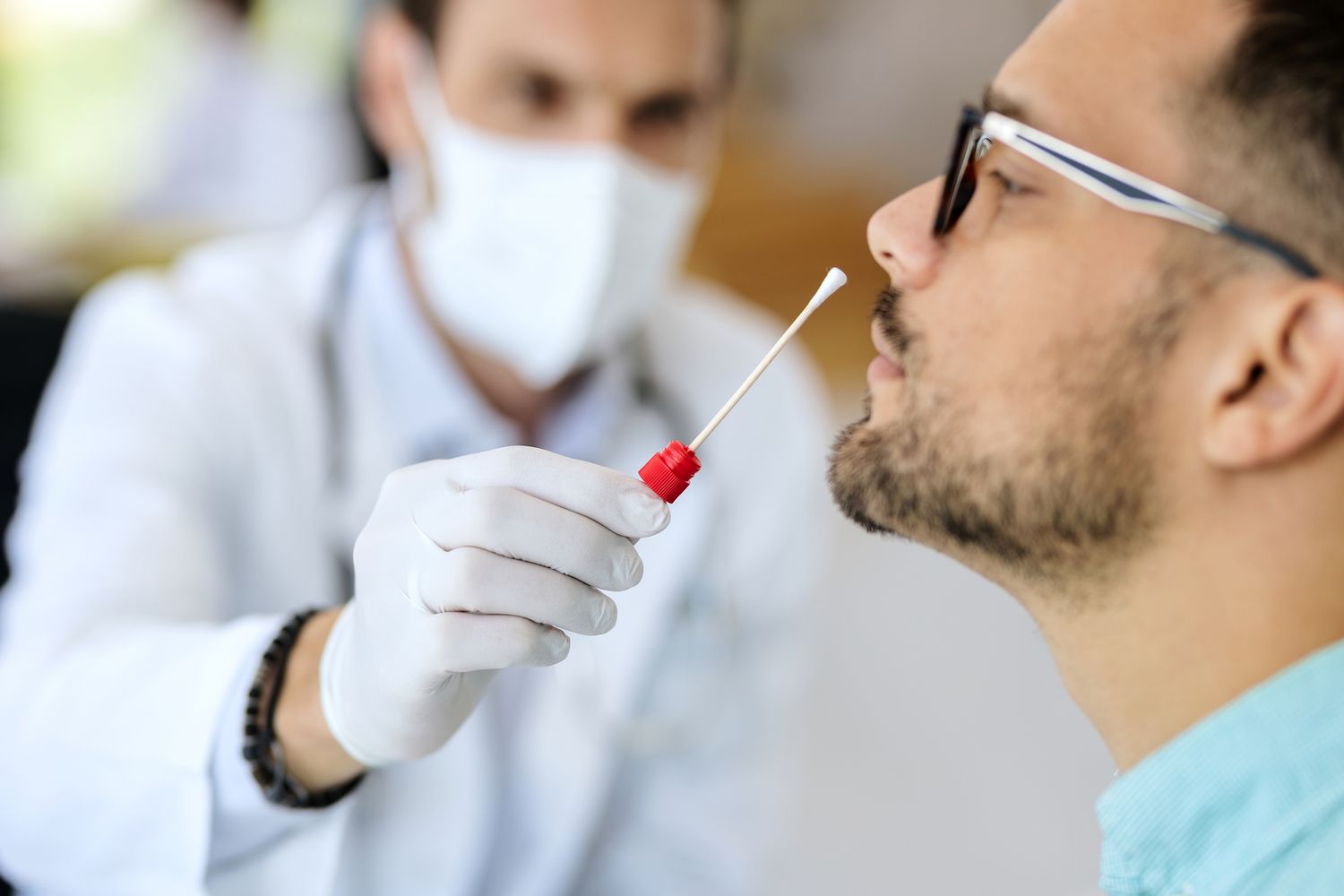In view of the return of many employees to their face-to-face jobs, the Ministry of Health updated two guides at the end of last December with instructions on conducting coronavirus diagnostic tests in companies.
Two fundamental guidelines are extracted from them: screening is discouraged, that is, testing workers who do not present symptoms except in health or social health environments or certain groups or populations.
And the recommended tests for cases with transmission capacity (workers with symptoms or close contact with infected persons) are PCR and rapid antigens, under no circumstances is serological suggested.
Representatives of workers and employers present their own recommendations. The General Union of Workers (UGT) union advocates, in a note published on January 7, to continue teleworking in those positions where it is possible and calls for the vaccination strategy to reach not only health workers but also essential workers and those who cannot keep the minimum safe distance.
Companies can, however, carry out massive tests on their workers. Administrations and unions advise against them but they are not prohibited. The Ministry guide insists, however, that these screenings are always carried out by a practicing physician and that they are related to high transmission in the area or in the target population of the screening.
On the companies side, they are the ones that sometimes carry out virus detection tests on their own initiative. In specific situations they have been promoted by the employer.
The employers’ association Spanish Confederation of Business Organizations (CEOE) and Business Confederation of Madrid-CEOE (CEIM) and the Community of Madrid signed an agreement last November to carry out massive tests in work centers such as Mercamadrid. These tests began on December 29 at a rate of 3,000 a week.
Many companies take their employees’ temperatures on a daily basis, a quick way to do a first screening. It is legal and recommended because this gesture complies with the obligation to guarantee the health and safety of workers . Both the unions and the Ministry insist on the need to convert the spaces into places without dangers or risks.
They recommend the disinfection of work equipment and elements of great contact such as doorknobs, compliance with the minimum distance of two meters and the supply of hydroalcoholic gel. The same measures that were implemented at the beginning of the pandemic.
Carlos Royo, professor in the Department of People Management and Organization of the Esade business school, reports on the precautions that companies take when carrying out massive tests on their workers: “They are very sensitive not to generate comparative grievances as to why some yes and others no ”.
Royo explains the following criteria: “The screening is carried out according to the type of job. Those that are vital for the activity and those that are carried out in person are prioritized ”. This, in regard to preventive screening.
The Ministry’s manual of course insists that the priority when testing is the seriously symptomatic and the most vulnerable. It is about detecting positive cases rather than ruling out those that are not.
The vulnerable group includes diabetes patients, cardiovascular patients (including hypertensive), those with chronic lung disease, immunodeficiency and cancer undergoing active treatment. Pregnant women and those over 60 are considered sensitive.
The PCR test is the only one recommended by the WHO (World Health Organization) for the early detection of the disease, which should be done in suspected cases in the first 24 hours. Anyone with any of the symptoms associated with the SARS-CoV-2 virus, such as fever, cough, or feeling short of breath, is susceptible to being the source of infection.
“PCRs detect the nucleic acid (RNA) of the virus. They report whether the respiratory samples of a person have this genetic material and therefore are carriers of the virus “, explains Antoni Trilla, epidemiologist and head of the Preventive Medicine service at the Hospital Clínico de Barcelona, in the webinar organized by Sabadell Seguros.
These tests are used to diagnose acute disease and should be repeated periodically if necessary to ensure that you do not have the disease continuously. “The test only gives information about the now. It is a photograph of the current state of health, ”says Trilla. It is advisable that if symptoms occur or if you are part of a risk group for possible contagion, this type of test is performed.
Royo points out the importance of combining a good action protocol with good communication of what employees have to carry out. “Workers are tired of working from home and having that feeling back and forth. Communication and the work of middle managers is key to getting the new information, ”he abounds.
Faced with the implementation of a mixed telework and face-to-face system or a zigzag arrangement in the workplace – as examples of plausible regulations in many companies – the professor insists on the need to implement it through intermediate positions. “They have to be committed and empowered so that the impact is not negative.”
Some companies have delegates for the prevention of occupational hazards, who will receive new powers such as ensuring that workers wear a mask or that there is always hydroalcoholic gel available. “The private company by definition is more flexible, so on many occasions it establishes internal regulations in advance of public administrations,” he says.
The professor highlights the role that the Human Resources department – or the People Area, as he prefers to call it – has acquired in the prevention of occupational hazards. “It is at a crucial strategic moment to demonstrate to the General Management that its role is important, that it can form part of the hard core such as Treasury, Finance …”, says Royo.



 Bitcoin
Bitcoin  Ethereum
Ethereum  Tether
Tether  XRP
XRP  Solana
Solana  USDC
USDC  Cardano
Cardano  TRON
TRON  Lido Staked Ether
Lido Staked Ether  Avalanche
Avalanche  Toncoin
Toncoin